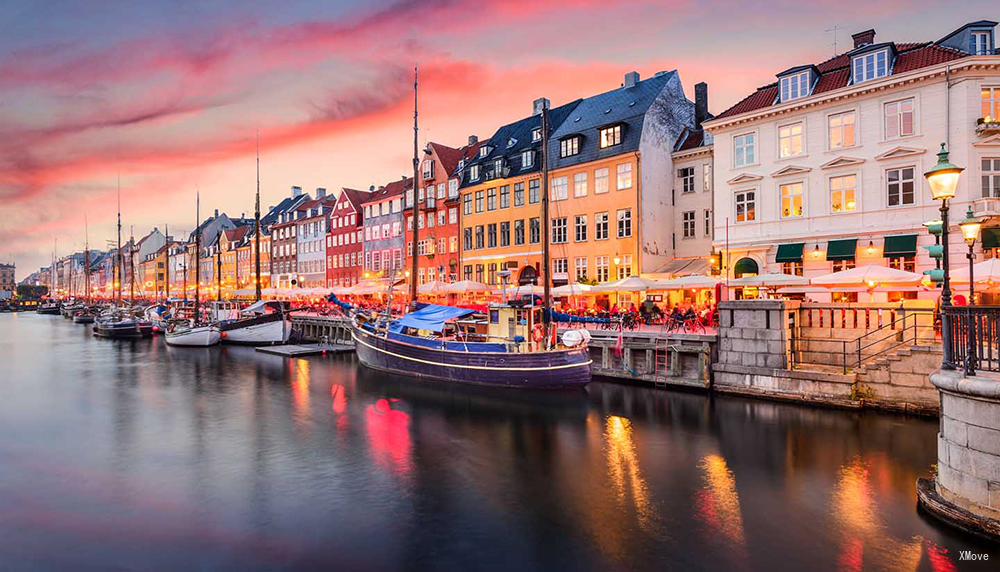Copenhagen to Prague: Trains, Buses, Fares, Today's Connections, Routes, Duration, Types of Trains, Station Guides, Tips, Journey
Denmark Train Tickets
Train schedule Copenhagen(Koebenhavn) to Prague(Praha)
Popular train routes departing from Copenhagen(Koebenhavn)
* Duesseldorf Hbf(Düsseldorf Hbf)
* Rendsburg
* Rotterdam Centraal
* Kitzbühel Central(Kitzbühel Hbf)
* Interlaken Ost
* Bremen Central(Bremen Hbf)
* Luebeck Hbf(Lübeck Hbf)
Popular train routes arriving in Copenhagen(Koebenhavn)
* 馬爾默中央火車站(Malmö C)
* 格丁尼亞(Gdynia)
* 柏林(Berlin)
* 蘭德格拉夫(Landgraaf)
* 斯特拉斯堡(Strasbourg)
* 奧爾堡火車站(Aalborg St)
* 維斯馬(Wismar)
Popular train routes departing from Prague(Praha)
* Basel Sbb
* Lund Central(Lund C)
* Cesky Krumlov(česka Krumlov)
* Muenchen Hbf(München Hbf)
* Budapest Central(Budapest Keleti Pályaudva)
* Minsk
* Amberg
Popular train routes arriving in Prague(Praha)
* Cracóvia(Kraków)
* Frankfurt Central Sul(Frankfurt(Main)Süd)
* Estação Central De Nuremberg(Nürnberg Hbf)
* Minsk
* Estação Central De Innsbruck(Innsbruck Hbf)
* Estação Central De Varsóvia(Warszawa Centralna)
* Estação Principal De Bayreuth(Bayreuth Hbf)

Copenhagen (Danish: København [kʰøpm̩ˈhaʊ̯ˀn] ) is the capital and most populous city of Denmark. As of July 2018, the city has a population of 777,218 (616,098 in Copenhagen Municipality, 103,914 in Frederiksberg Municipality, 43,005 in Tårnby Municipality, and 14,201 in Dragør Municipality). It forms the core of the wider urban area of Copenhagen (population 1,320,629) and the Copenhagen metropolitan area (population 2,057,737). Copenhagen is situated on the eastern coast of the island of Zealand; another small portion of the city is located on Amager, and it is separated from Malmö, Sweden, by the strait of Øresund. The Øresund Bridge connects the two cities by rail and road. Originally a Viking fishing village established in the 10th century in the vicinity of what is now Gammel Strand, Copenhagen became the capital of Denmark in the early 15th century. Beginning in the 17th century it consolidated its position as a regional centre of power with its institutions, defences and armed forces. After a plague outbreak and fire in the 18th century, the city underwent a period of redevelopment. This included construction of the prestigious district of Frederiksstaden and founding of such cultural institutions as the Royal Theatre and the Royal Academy of Fine Arts. After further disasters in the early 19th century when Horatio Nelson attacked the Dano-Norwegian fleet and bombarded the city, rebuilding during the Danish Golden Age brought a Neoclassical look to Copenhagen's architecture. Later, following the Second World War, the Finger Plan fostered the development of housing and businesses along the five urban railway routes stretching out from the city centre. Since the turn of the 21st century, Copenhagen has seen strong urban and cultural development, facilitated by investment in its institutions and infrastructure. The city is the cultural, economic and governmental centre of Denmark; it is one of the major financial centres of Northern Europe with the Copenhagen Stock Exchange. Copenhagen's economy has seen rapid developments in the service sector, especially through initiatives in information technology, pharmaceuticals and clean technology. Since the completion of the Øresund Bridge, Copenhagen has become increasingly integrated with the Swedish province of Scania and its largest city, Malmö, forming the Øresund Region. With a number of bridges connecting the various districts, the cityscape is characterised by parks, promenades and waterfronts. Copenhagen's landmarks such as Tivoli Gardens, The Little Mermaid statue, the Amalienborg and Christiansborg palaces, Rosenborg Castle Gardens, Frederik's Church, and many museums, restaurants and nightclubs are significant tourist attractions. The largest lake of Denmark, Arresø, lies around 27 miles (43 kilometers) northwest of the City Hall Square. Copenhagen is home to the University of Copenhagen, the Technical University of Denmark, Copenhagen Business School and the IT University of Copenhagen. The University of Copenhagen, founded in 1479, is the oldest university in Denmark. Copenhagen is home to the FC København and Brøndby football clubs. The annual Copenhagen Marathon was established in 1980. Copenhagen is one of the most bicycle-friendly cities in the world. The Copenhagen Metro launched in 2002 serves central Copenhagen. The Copenhagen Metro is scheduled to expand radically with the opening of the City-ring line during fall 2019, the new line will connect all inner boroughs of the city by metro, including The Central Station, and will open up 17 new stations for Copenhageners. The new metro line is a part of the city's strategy to transform mobility towards sustainable modes of transport such as public transport and cycling as opposed to automobility. Additionally the Copenhagen S-train, the Lokaltog (private railway) and the Coast Line network serves and connects central Copenhagen to outlying boroughs. The Copenhagen-Ringsted Line will relieve traffic congestion in the corridor between Roskilde and Copenhagen. Serving roughly two million passengers a month, Copenhagen Airport, Kastrup, is the busiest airport in the Nordic countries.
Copenhagen - Guide, Attractions, Tours, Sightseeings | Train from/to Copenhagen | Popular RoutesPrague (; Czech: Praha [ˈpraɦa] , German: Prag, Latin: Praga) is the capital and largest city in the Czech Republic, the 14th largest city in the European Union and the historical capital of Bohemia. Situated on the Vltava river, Prague is home to about 1.3 million people, while its metropolitan area is estimated to have a population of 2.6 million. The city has a temperate oceanic climate, with relatively warm summers and chilly winters. Prague is a political, cultural and economic centre of central Europe complete with a rich history. Founded during the Romanesque and flourishing by the Gothic, Renaissance and Baroque eras, Prague was the capital of the Kingdom of Bohemia and the main residence of several Holy Roman Emperors, most notably of Charles IV (r. 1346–1378). It was an important city to the Habsburg Monarchy and its Austro-Hungarian Empire. The city played major roles in the Bohemian and Protestant Reformation, the Thirty Years' War and in 20th-century history as the capital of Czechoslovakia between the World Wars and the post-war Communist era.Prague is home to a number of well-known cultural attractions, many of which survived the violence and destruction of 20th-century Europe. Main attractions include Prague Castle, Charles Bridge, Old Town Square with the Prague astronomical clock, the Jewish Quarter, Petřín hill and Vyšehrad. Since 1992, the extensive historic centre of Prague has been included in the UNESCO list of World Heritage Sites. The city has more than ten major museums, along with numerous theatres, galleries, cinemas and other historical exhibits. An extensive modern public transportation system connects the city. It is home to a wide range of public and private schools, including Charles University in Prague, the oldest university in Central Europe.Prague is classified as an "Alpha −" global city according to GaWC studies and ranked sixth in the Tripadvisor world list of best destinations in 2016. In 2019, the city was ranked as 69th most liveable city in the world. Its rich history makes it a popular tourist destination and as of 2017, the city receives more than 8.5 million international visitors annually. In 2017 Prague was listed as the fifth most visited European city after London, Paris, Rome and Istanbul.
Prague - Guide, Attractions, Tours, Sightseeings | Train from/to Prague | Popular Routes
Denmark Train Tickets
Hot Journeys
* Munich(Müchen) -> Berlin(Berlin)
* Cologne(Köln) -> Frankfurt Airport(Frankfurt Flughafen)
* London(London) -> Brussels(Bruxelles)
* Milan -> Venice(Venezia)
* Munich(Müchen) -> Dusseldorf(Düsseldorf)
* Rome(Roma) -> Venice(Venezia)
* Dusseldorf(Düsseldorf) -> Frankfurt
* Interlaken -> Swiss Alps Jungfrau Aletsch
* Dusseldorf(Düsseldorf) -> Frankfurt Airport(Frankfurt Flughafen)
* Beijing(北京) -> Shanghai(上海)
* Bratislava(Bratislava) -> Warsaw(Warszawa)
* Brussels(Bruxelles) -> Paris
* Florence -> Prato(Prato)
* Milan -> Florence
* Moscow(Москва) -> St. Petersburg(санкт петербург)
* Frankfurt -> Cologne(Köln)
* Barcelona -> Valencia
* Rome(Roma) -> Florence




